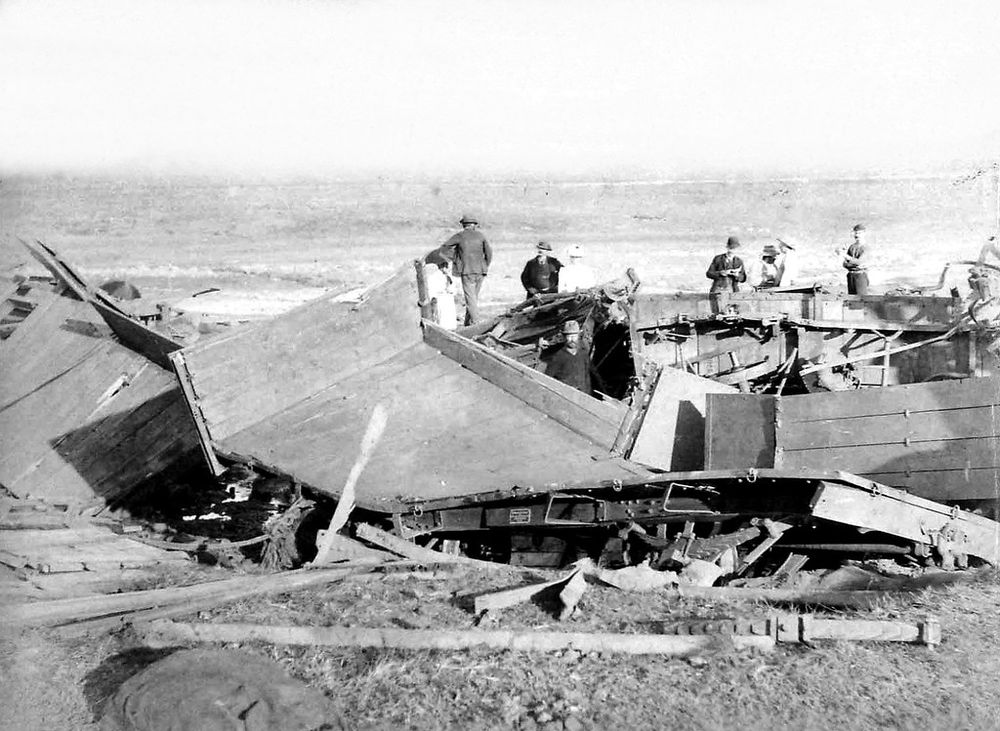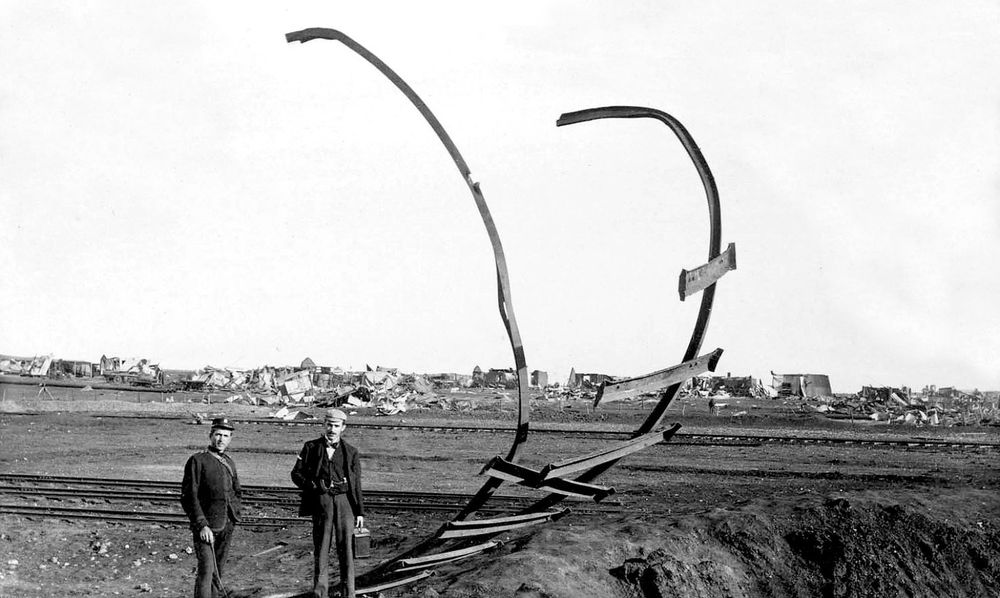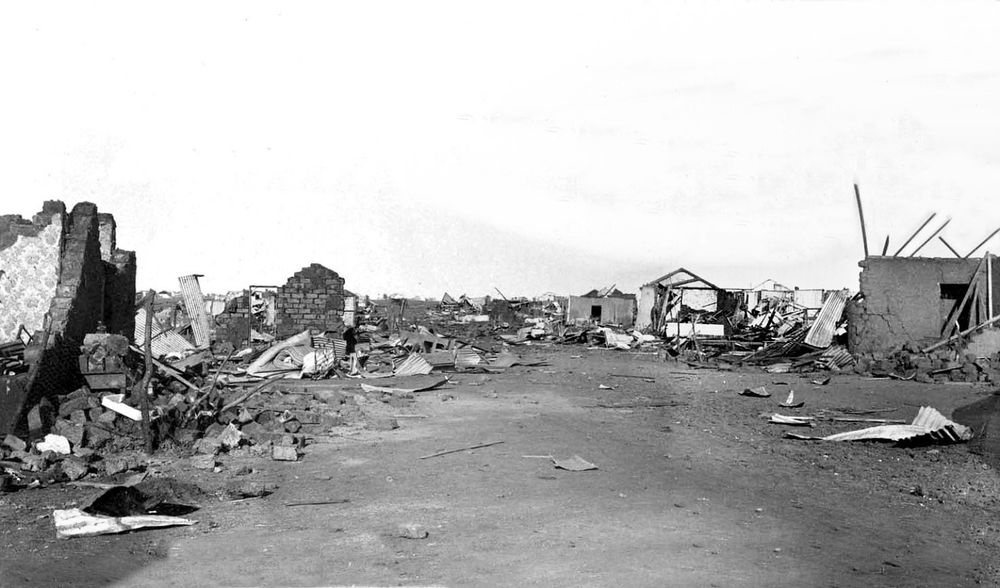As with any industry, and especially mining, the city endured many disasters and accidents.
A locomotive topples over due to the explosion.
It was Sunday, February 16, 1896, when a train pulled up at the Braamfontein station.

The yard foreman advised to leave the dynamite on the trucks until storage space could be found.
A little shunting engine was called to assist.
Destroyed rolling stock following the explosion.

The explosion left a crater 250 feet long, 60 feet wide and 40 feet deep.
At each end of this crater twin sets of rails were contorted upwards.
Whole roofs had been lifted and dropped untidily hundreds of yards from the homes they had once covered.

Through the wreckage wandered battered and bewildered men and women; only the dead lay unaware and silent.
The crater created by the dynamite explosion.
More than 70 people were killed and over 200 were injured.

Some 3,000 people lost their homes.
Those injured were rushed to the hospitals until they overflowed.
Witnesses reported instances where railway workers would recklessly toss dynamite cases from the train onto the wagons.

A section of the track where the explosion took place.
Additionally, there was a lack of caution in the transportation of explosives.
The Braamfontein explosion left an indelible mark on Johannesburg’s history and collective memory.

In honor of this event, a memorial was erected in the Braamfontein Cemetery.
A scene of destruction resulting from the dynamite explosion in Braamfontein.
Part of the crater resulting from the explosion.

Mangled steel tracks after the explosion.